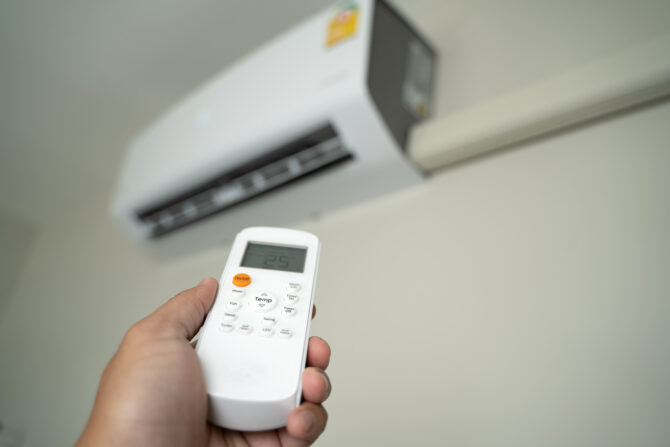Maximise Energy Efficiency in Your French Property with these Heating Solutions
Sponsored Content

Are you looking to learn about sustainable heating solutions for your home? This article covers the benefits and workings of air to water heat pumps, individual solar water heaters, combined solar systems, pellet boilers, and pellet stoves. Discover how these systems operate and why they are a cost-effective and eco-friendly choice for your heating needs.
Heat Pumps
What is an air to water heat pump?
An air to water heat pump is a fan system located outside the building, connected to an existing central heating circuit (radiator, heated floors, etc.).
How does an air to water heat pump work?
The outdoor unit draws heat calories from the outside air. These calories are transported via a refrigerant to the indoor unit, transferring the extracted heat to water. This heat is then routed to the heating emitters (radiator, heated floors, etc). In very basic terms, a heat pump is a backwards fridge, the same technology and mechanisms are used.
Why install an air-water heat pump?
This system is fully automatic. After installation and commissioning by professionals, the air-water heat pump will operate and regulate your heating needs on its own. In addition, this installation allows a significant reduction in the price of electricity or gas bills. These systems are 3 to 4 times more efficient than an electric radiator or boiler.
Individual Solar Water Heater
What is an Individual Solar Water Heater?
An Individual Solar Water Heater (CESI) allows the production of domestic hot water via a system of solar thermal collectors, which absorb and transform solar radiation into heat.
How does an Individual Solar Water Heater work?
Thanks to solar thermal collectors, solar radiation is absorbed and transmitted to a fluid, which, raised to a high temperature, is connected to a storage tank with a heat exchanger. This fluid, circulating in the storage tank, therefore heats the water. During the winter period when there’s less sunshine, this system requires additional backup to take over.
Why install an Individual Solar Water Heater?
It allows the replacement of an old water heater running on electric or gas energy, without making any changes to your existing domestic hot water network. In addition, it has an economic aspect, because with this system you get completely free hot water production during the summer, without any impact on the environment.
Combined Solar System
What is a Combined Solar System?
A Combined Solar System (SSC) allows the production of domestic hot water and contributes to your central heating needs. Like the Individual Solar Water Heater (CESI), solar thermal collectors absorb heat from solar radiation.
How does a Combined Solar System work?
Its operation is similar to CESI. Thanks to solar thermal collectors, a heat transfer fluid is routed to a storage tank with a heat exchanger. Thus heating the water contained in the storage tank. During the winter period when the amount of sunshine is lower, this system requires a backup to take over (heat pump or pellet boiler for example).
Why install a Combined Solar System?
If you want to go greener and save money, these installations can either replace or provide backup for older heating systems running on gas or oil, without modifying your water network or radiators. The SSC allows you to benefit from free heating water and domestic hot water, without any impact on the environment.
Pellet boilers
What is a pellet boiler?
One of the best central heating systems that can be installed in a renovation or new construction context. The pellet boiler is efficient, economical and ecological, because it uses a renewable and inexpensive energy source: wood.
How does a pellet boiler work?
The pellets are transported from the tank by an Archimedes screw system to the combustion chamber. Here, they are burned to heat the water in the central heating system. The pellet flow rate is automatically controlled by the boiler according to your heating or domestic hot water needs.
Why install a pellet boiler?
It allows easy and economical replacement of an old boiler running on oil or gas, without making changes to your water network and radiators already in place. The pellet boiler allows you to save money while reducing your impact on the environment.
Pellet stoves or wood stoves
Pellet stoves work using an Archimedes screw system. Equipped with enough storage space to hold a few days worth of pellets, it conveys the pellets gradually and at controlled speed to the combustion chamber. The fire is lit using an electrical resistance, and a fan provides the air necessary for combustion.
When burning, the pellets produce and emit heat. The hot air produced by this fire is diffused into the room by a fan which evenly distributes the diffusion of the hot air.
A wood burning stove requires no external energy source (electricity) other than striking a match yourself. There are numerous colours and styles to choose from, we’ll find something that you’ll fall in love with.
There are also hydraulic models that can be hooked up to you central heating system to better distribute the heat.
SAKKAÏ is a company specialising in heating systems with high ecological and economic values, such as pellet and wood boilers, pellet and wood stoves, as well as heat pumps or combined solar systems.
Lead photo credit : Shutterstock
Share to: Facebook Twitter LinkedIn Email
More in heating
By Sakkai
Leave a reply
Your email address will not be published. Required fields are marked *




